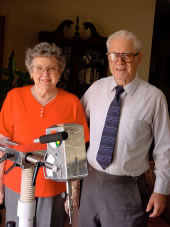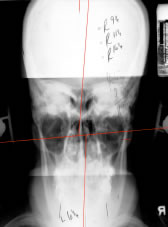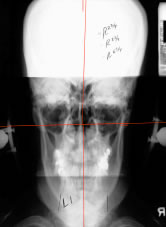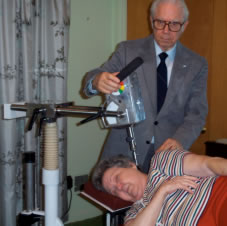

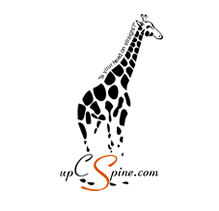 |
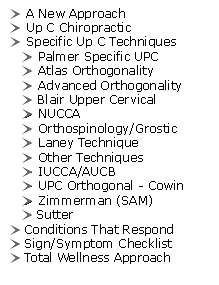 |
|
Home | A New Approach | Specific Up C Techniques | Laney Instrument LANEY INSTRUMENT THE TORQUE SPECIFIC CERVICAL ADJUSTING INSTRUMENT Summary Statement Introduction to Atlas corrections If Palmer’s belief system is to be accepted, and if Grostic’s method is indeed superior, a logical question to ponder is why did the method and the focus on the cervical spine not dominate the Chiropractic profession. The cervical subluxation problem The solution I began researching instrument adjusting almost fifty years ago. This work became my Life’s profession goal and continues to this day. In 1954, I began designing and building instruments. Several were hand-held models, and table-mounted devices soon followed. At all times and with every instrument I utilized the vector produced by the Grostic procedure. One table-mounted instrument even included a rotating stylus. This stylus could be made to turn either clock-wise or counter-clockwise. My research, conducted on thousands of misaligned patients, convinced me that a turning stylus had no effect on reducing a subluxation. The Torque factor revisited The stated purpose of "torque" in the Grostic procedure is to move the axis spinous process. There is so-called "inferior" and "superior" torque. Inferior torque is the term for moving the spinous away from the adjuster, or downward. Superior torque is moving the spinous toward the adjuster, or upward. The Grostic hand torque does work. But how? Does the adjuster's radius and ulnar crossing over one another cause the pisaform bone to spiral? What effect would this have on the movement of the spinous of axis? I spent ten years observing the adjustment of thousands of patients, and it became obvious to me that it was the element of more leverage that moved the spinous process of axis. In other words, more height moved the inferior spinouses and less height moved the superior spinouses. If this conclusion is to be accepted, the upper cervical chiropractor is led to ask why not just add to or subtract from the height factor? This is exactly what the Orthospinology doctors did with the hand- held instrument with great success. However, this modification did not completely solve the problem. The doctor is trying to move the axis spinous and lower cervicals by contacting the transverse process of atlas and therefore using the atlas as a lever. It is now recognized that the stylus – the line of drive – cannot be set over 30 degrees without losing contact with the transverse process since the patient’s skull blocks it. It is unfortunate that many listings [the term used for the correction vector resulting from analyzing the pre-adjustment X-rays] require this extra leverage to move the spinous. Torque provides the extra leverage. [Note: Pre-adjustment X-ray on left and post on right].
The question therefore remained. How does the hand torque create more leverage? A careful study of the problem revealed that if the torque was to work, it had to be perfectly coordinated with the toggle and had to be completed precisely simultaneously. The hand torque worked at the point when the torqueing stopped. It created a downward or upward increase in the leverage factor of the force. The process created a rectilinear and angular force in one operation. In other words, a multi-vector force. This realization eluded the profession and stymied the creation of a truly effective adjusting instrument for decades. This difficulty caused another review of statements from well-known doctors: Two in particular stand out for the insight into the cervical adjustment quandary.
The Torque Factor Solution I built an instrument whose stylus moved in an angular vector at the end of the linear portion of the thrust! This discovery was the solution, and the corrections increased in effectiveness by an order of magnitude. I saw the best corrections I had ever seen – consistently and reliably. Moreover, my patients held their corrections for longer periods of time it was a true breakthrough. This vector was the true torque! It was not rotational spin, but angular movement that made it work. The idea was easy to conceive but difficult to translate into a production model, and the movement toward instrument production ground to a stop for several years, until 1996. In that year, Dr. Sid E. Williams, President and founder of Life University, showed an interest in building an improved version of my table-mounted prototype. This vote of confidence, not only in upper cervical work but also in instrument adjusting invigorated my hopes and plans and those of my colleagues who have wanted to see the upper cervical method—and the instrument—more accepted throughout the profession.
Months of testing then ensued. Dr. Roger Hinson led this work, adjusting hundreds of patients. He was particularly interested in using the instrument on problem cases that other methods had failed to clear. After a favorable report on its value and potential, the instrument was cleared for production. It is marketed under the trade name, "The Torque Specific Cervical Adjusting Instrument.™" Life University had Spinalight build several more Torque™ instruments. They were placed in classrooms and in every Life clinic. The technique and the instrument are now being taught in the regular curriculum. Quote from Dr. Beth Amacher, senior instructor on the Life University faculty, "I believe the specificity and repeatability of this instrument attract the students to this type of orthogonally based chiropractic. The results the students have obtained from the Torque instrument have definitely lived up to Dr. Laney’s promise, of a perfect adjustment every time. The post Xrays speak for themselves." The Torque Method Features of the instrument include these capabilities
Comments from some of the field doctors who have the instrument are notable
The results now being shown, after hundreds of patients and thousands of hours of research, indicate a truly outstanding record. The Torque™ instrument is clearly a new standard in upper cervical corrections. See figure one. A correction made by Dr. J. K. Humber, Jr. using the Torque instrument. There continues to be discussion within the profession about how corrections can be quantified due to the uncertainty of what is "normal." While asymmetries exist in every human body, it is not of the magnitude to invalidate our assumptions. It has been observed for over sixty years that the closer the upper cervical spine is to the orthogonal position, the better the body remains balanced and the longer it can exist without neurological insult. See figure two. The Future It remains to be seen how many doctors are dedicated to excellence. How many will acquire the training and utilize the instrument to make better corrections? The instrument removes the difficult part, which is providing the adjustment. The process is now achievable for anyone. A person not trained in the Grostic-based procedure could not make use of the instrument and is not eligible to buy it. Training in the Grostic-based procedure is available from these entities: NUCCA, The Society of Orthospinology and the New Life Cervical Course at Life University. The tragedy is that billions of suffering people are not yet getting the benefit of this procedure. That is my main concern. The Torque™ instrument is now available to the field doctors. If interested, contact Spinalight, Inc. or Life University. References
|
